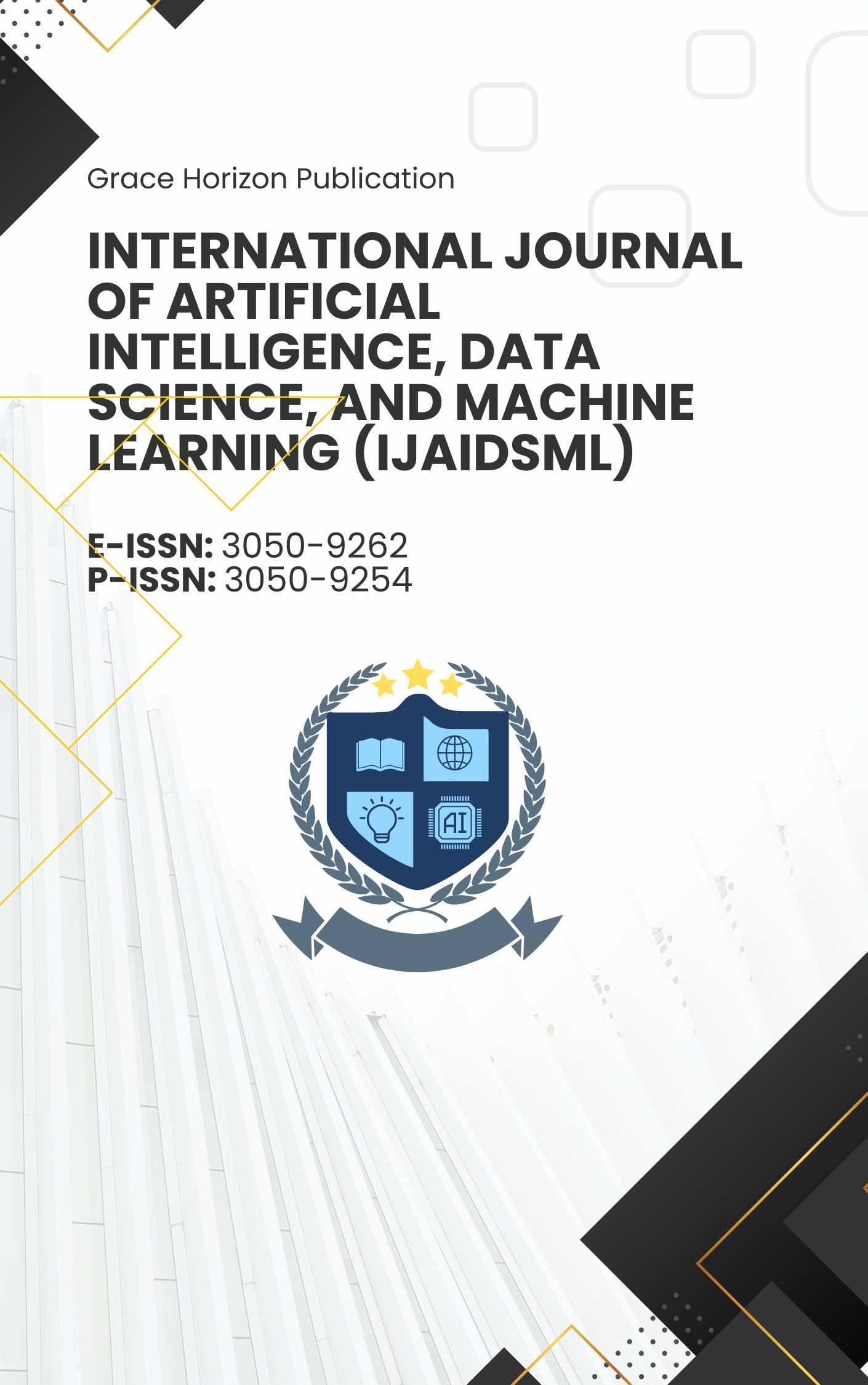EmoVision: An Intelligent Deep Learning Framework for Emotion Understanding and Mental Wellness Assistance in Human Computer Interaction
DOI:
https://doi.org/10.63282/3050-9262.IJAIDSML-V6I4P103Keywords:
Emotion Recognition, Deep Learning, Mental Well- Ness Support, Human Computer Interaction, Empathetic Artificial IntelligenceAbstract
Emotion plays an essential role in thought attention decision making memory regulation and overall mental wellbeing. Human interaction with digital systems increases each year therefore emotional intelligence in machines is becoming a vital focus in artificial intelligence research. This work presents EmoVision which is a comprehensive real time deep learning system capable of understanding human facial expressions and offering personalized mental wellness guidance with the objective of supporting emotional stability and wellbeing. The framework uses a convolutional neural network trained on diverse facial expression data along with psychological wellness recommendation strategies based on cognitive behavior wellness practices. The model attained robust performance in classification accuracy while maintaining real time inference speed. EmoVision not only recognizes emotional states such as happiness sadness anger fear surprise and neutrality but also encourages emotional resilience and balance through targeted suggestion modules. The system aims to create machines that respond with empathy and emotional awareness offering meaningful interaction beyond simple recognition tasks. This research enables future work in empathetic artificial intelligence intelligent therapy companion’s emotional learning in robots and emotionally responsive educational platforms
References
[1] S. K. Gunda, "A Deep Dive into Software Fault Prediction: Evaluating CNN and RNN Models," 2024 International Conference on Electronic Systems and Intelligent Computing (ICESIC), Chennai, India, 2024, pp. 224-228, https://doi.org/10.1109/ICESIC61777.2024.10846549
[2] D. Bhagat and A. Khurana and P. Pote, Facial Emotion Recognition Using Convolutional Neural Networks, Procedia Computer Science, 2024.
[3] W. Mellouk and W. Handouzi, Deep learning for facial expression recognition: a survey, Procedia Computer Science, 2020.
[4] M. Li and J. Xu and W. Deng, Joint identity and emotion learning for fa- cial expression recognition, IEEE Transactions on Affective Computing, 2018.
[5] J. Wang, CNN based facial emotion understanding, Proceedings of ICIAAI, 2024.
[6] P. S. Suseelan and S. Kannan, Emotion support modeling with deep networks, Sensors, 2024.
[7] J. Wang and T. Ma, AI oriented emotional support system, Computer Science and Information Technology, 2024.
[8] Donatus, Emotion recognition research for mental wellness, Infor- matica, 2021.
[9] S. K. Gunda, "Automatic Software Vulnerabilty Detection Using Code Metrics and Feature Extraction," 2025 2nd International Conference On Multidisciplinary Research and Innovations in Engineering (MRIE), Gurugram, India, 2025, pp. 115-120, https://doi.org/10.1109/MRIE66930.2025.11156601.
[10] Z. Yu and C. Zhang, Image based emotion learning with convolutional features, IEEE Transactions on Multimedia, 2020.
[11] K. Zhang and Y. Li, Real time deep emotion recognition for interactive systems, IEEE Access, 2022.
[12] D. Keltner and L. Feldman Barrett, Emotional expression and psycho- logical science foundation, Annual Review of Psychology, 2020.
[13] S. Hochreiter and J. Schmidhuber, Long short term memory, Neural Computation, 1997.
[14] Vaswani et al, Attention is all you need, Advances in Neural Information Processing Systems, 2017.
[15] Manga, "AutoML for All: Democratizing Machine Learning Model Building with Minimal Code Interfaces," 2025 3rd International Conference on Sustainable Computing and Data Communication Systems (ICSCDS), Erode, India, 2025, pp. 347-352, doi: https://doi.org/10.1109/ICSCDS65426.2025.11167529.
[16] F. Chollet, Deep learning with depthwise separable convolutions, Pro- ceedings of CVPR, 2017.
[17] He and X. Zhang, Deep residual learning for vision tasks, Proceedings of CVPR, 2016.
[18] Krizhevsky and I. Sutskever and G. Hinton, Deep convolutional neural networks for visual recognition, NIPS, 2012.
[19] T. Ojala, M. Pietikainen, Classification using local binary patterns, IEEE Transactions on Pattern Analysis, 2002.
[20] S. Li and W. Deng, Deep emotion modeling challenges, IEEE Transac- tions on Affective Computing, 2022.
[21] Gunda, S.K. (2026). A Hybrid Deep Learning Model for Software Fault Prediction Using CNN, LSTM, and Dense Layers. In: Bakaev, M., et al. Internet and Modern Society. IMS 2025. Communications in Computer and Information Science, vol 2672. Springer, Cham. https://doi.org/10.1007/978-3-032-05144-8_21
[22] D. Kahneman, Thinking and emotion influence in decision behavior, Princeton University Press, 2011.
[23] Manga, "Towards Explainable AI: A Framework for Interpretable Deep Learning in High-Stakes Domains," 2025 5th International Conference on Soft Computing for Security Applications (ICSCSA), Salem, India, 2025, pp. 1354-1360, doi: https://doi.org/10.1109/ICSCSA66339.2025.11170778.
















